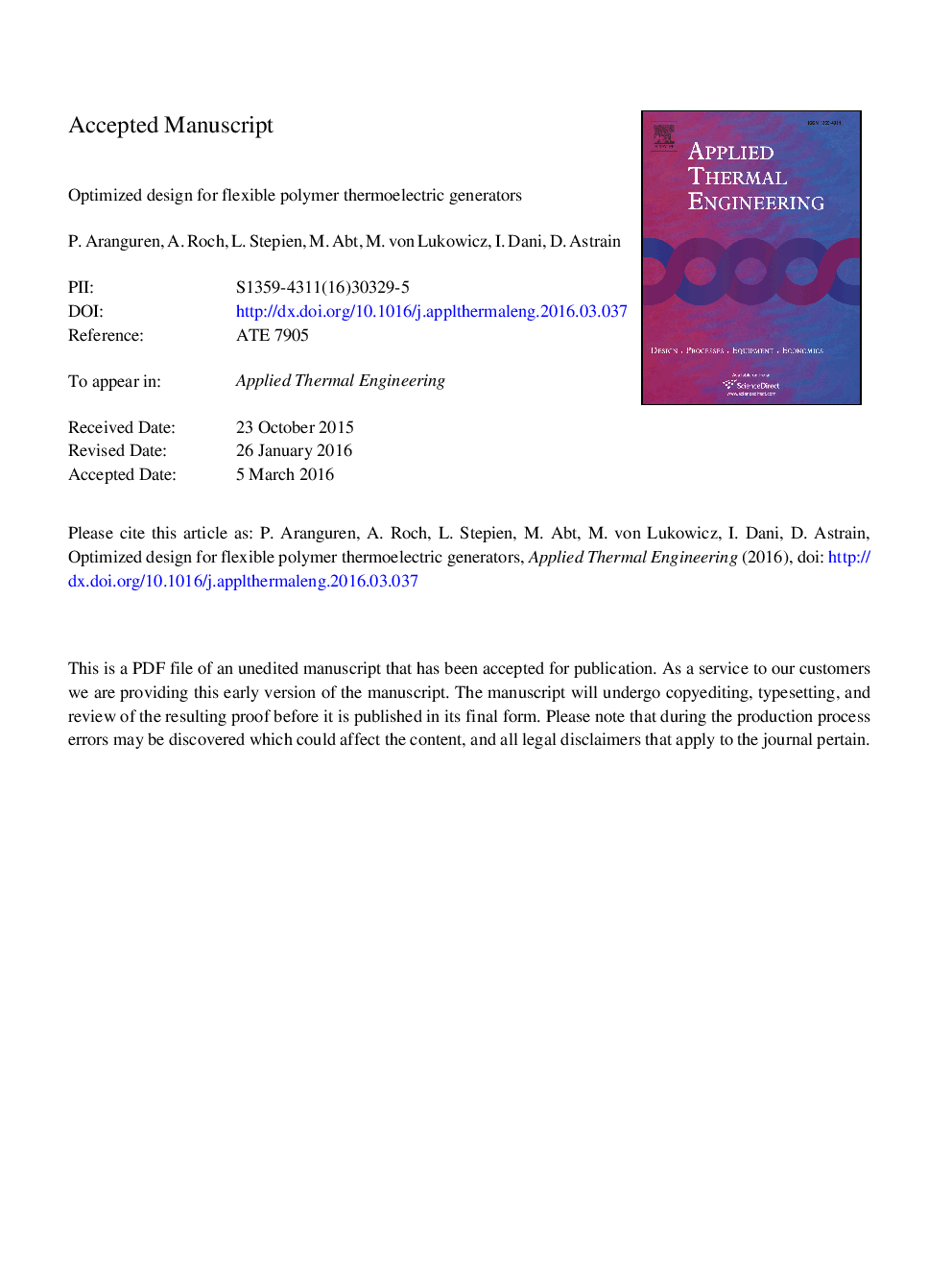| Article ID | Journal | Published Year | Pages | File Type |
|---|---|---|---|---|
| 7047977 | Applied Thermal Engineering | 2016 | 39 Pages |
Abstract
The validated computational model has been used to geometrically optimize the power generation of the polymer TEM. The Ï-sectional area of the p-type and n-type legs, their length and the number of thermocouples have been modified obtaining an improvement of 50 times the power generated by the printed module, the base design. The optimized geometry has been studied into a real application scenario of waste heat harvesting, a tile furnace with a smoke mass flow of 6.39 kg/s and a temperature of 187 °C. The thermoelectric generation of the polymer TEG located at the exhaust of the tile furnace ascends to 21.73 MW h/year. In comparison with the bismuth-telluride commercial modules, the polymer production is six times lower, however, the advantages of the polymers materials over the commercial modules make them suitable for thermoelectric generation.
Keywords
Related Topics
Physical Sciences and Engineering
Chemical Engineering
Fluid Flow and Transfer Processes
Authors
P. Aranguren, A. Roch, L. Stepien, M. Abt, M. von Lukowicz, I. Dani, D. Astrain,
